Movie Review: 'Saw 2'
The Saw franchise earned franchise status with its terrific sequel.
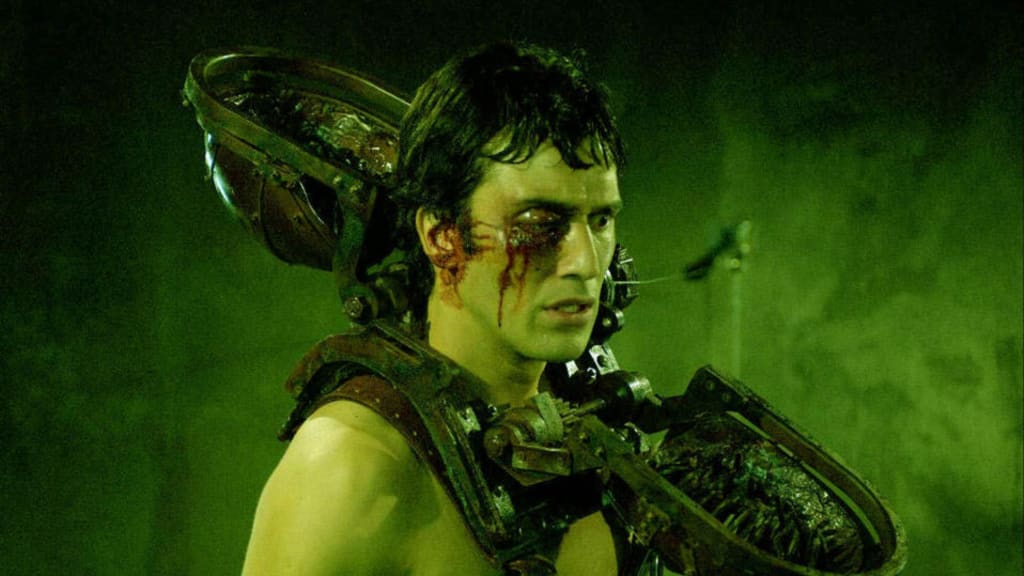
Spiral: From the Book of Saw opens May 14th, 2021. As part of a series looking at the franchise, I am watching and reviewing the Saw movies. I've already published reviews of Jigsaw (2017), Saw 3D (2010) and the original Saw (2004). With this review, I am picking up the franchise again and looking them, one movie at a time while placing them in the context of when they were released.
Here's my review of Saw II.
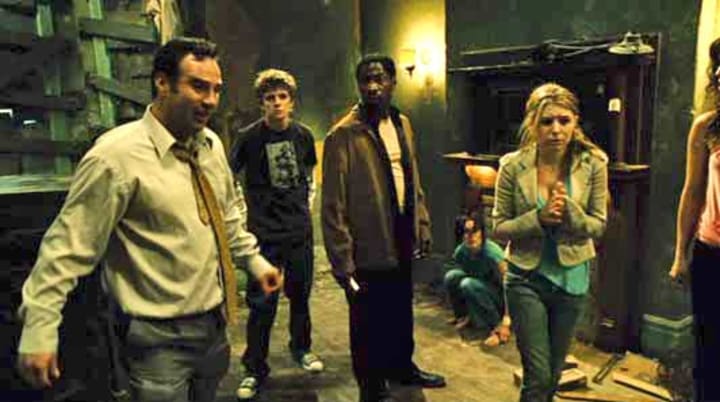
2004's Saw was a surprisingly clever horror story that combined elements of David Fincher’s Seven with the classic blood and guts that the horror genre is known for. The Rube Goldbergian murder inventions of the film's faceless killer, Jigsaw, were some of the most inventively horrifying creations ever brought to film and helped distinguish the film from other horror movies, under the label of torture porn. However, it the disturbing moral questions that the film asks that gave Saw a hint of kinky intelligence and depth that truly set it apart from the horror genre as something smarter and more memorable.
Saw II reinvented the plot the following year in 2005 by expanding the cast and delivering our killer in person and at the front of the plot, rather than his clever cameo in the original. Still in place from the original were the complicated murders and moral questions. But what makes Saw II nearly the equal of its predecessor is the squirm factor. Saw II made audiences twist in their seats in horror and disgust with sound design and visuals while tantalizing audiences with classic horror tropes. That squirm factor comes with a philosophical edge that many don't want to acknowledge but is undeniably there.
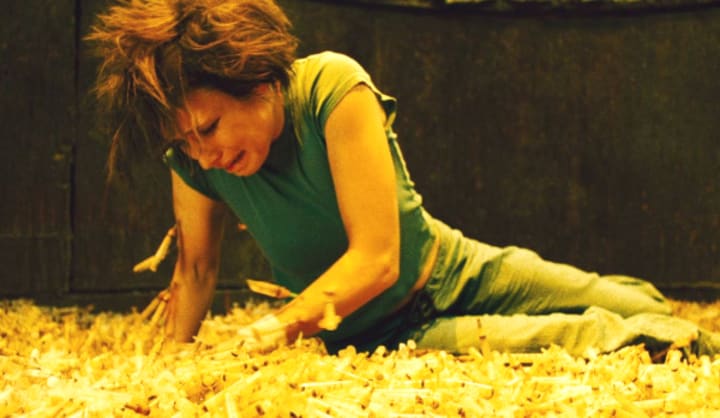
When last we left the Jigsaw killer (Tobin Bell) he had just escaped after completing a masterpiece of murder. Having not paused for a moment since we last saw him we are immediately thrust into the horror of his latest victim. A nameless 20 something guy awakens to find himself wearing an ancient torture device. Masks filled with nails are positioned in front of and behind his head. He has minutes before the mask will slam shut, crushing nails through his skull. His only way out is to locate the key to the device. Here is where things get tough, the key has been surgically placed behind his eyeball. He can lose an eye and save his life or die horribly, the choice is his, how much does he value life?
At the sight of the latest jigsaw murder a cop named Matthews (Donnie Wahlberg) has received an invitation to go head to head with Jigsaw himself. To ensure that Matthews plays along, Jigsaw has kidnapped Matthews' son. Daniel (Eric Knudson), and placed him in an abandoned house with several other potential victims. The house is rigged with elaborate murder devices and Matthews, along with his partner, Allison Kerry (Dina Meyer of Starship Troopers fame), can only watch on Jigsaw's hidden cameras as the victims discover their fate. Meanwhile, Matthews must try quiet his raging emotions to bargain with the heady and crafty killer as his latest masterwork of murder unfolds.
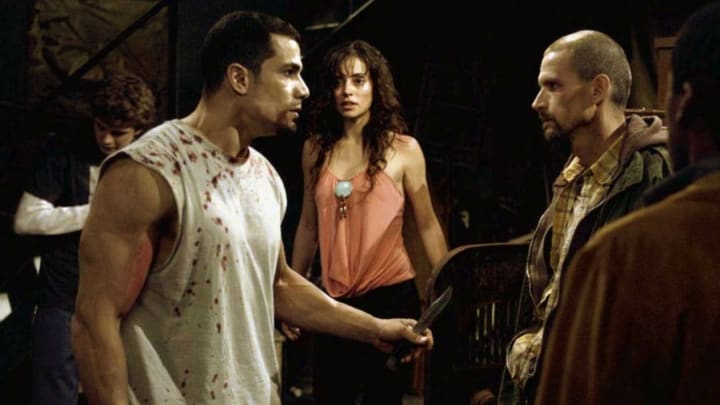
Inside the booby trapped house are a collection of former drug addicts and convicts whom Jigsaw has chosen for his latest experiment in survival of the fittest. Trapped in the house with Daniel are Xavier (Franky G), Jonas (Glen Plummer), Addison (Emmanuel Vaugier), Laura (Beverly Mitchell), Obi (Tim Byrd) and Amanda (Shawnee Smith). Amanda is the key to this group because she has survived Jigsaw's game before. Each of these potential victims holds the key to their own survival whether they know it or not.
This disparate group, who have a connection to one another that is not as mysterious as it appears to be, have been told that they have been dosed with a deadly nerve gas that will kill them in two hours unless they can obtain needles filled with the antidote that have been hidden throughout the house. How the antidote is hidden is part of Jigsaw's sadistic pattern of complicated killing devices that allow the victims a role in deciding how far they will go to save their own life. Running underneath each insidious trap is a complicated lesson to be learned, a subtextual theme running through all of Jigsaw's actions, one that runs counter to the Survival of the Fittest instinct for self preservation. Simply, if this group of selfish and narcissistic individuals put aside their differences, they could survive or they could go it alone and die. It's a lesson they will have to learn as they go and many die.

Leigh Whannell co-wrote Saw with director James Wan and did not lose a step in recreating that same skin crawling, breath catching, anxiety inducing vibe in his script for Saw II. Working with a new director, first timer Darren Lynn Bousman, Whannell crafted yet another series of darkly clever devices to make audiences twist and turn in their seats with discomfort and fear. I would not want to spend much time in the mind of a man who could imagine a pit full of syringes or a head crushing mask full of nails, but I found a certain sick thrill in a glimpse of that mind in the Saw movies. That Whannell remains a remarkably inventive and thoughtful voice in Hollywood films is a huge part of the legacy of the Saw franchise.
In watching Saw II again, I really enjoyed the way director Darren Lynn Bousman mimics not only the action of the first Saw movie but also the gritty washed out look of the original. While it's not exactly the same, Saw II has a wider map to explore, both films look dirty, dark, and decrepit, even in well lit scenes. Bousman expands on the strength of the original with gut-wrenching sound design that captures bones being crushed, flesh being cooked and the various ways the human body is fit to die. I also love how through giving us Jigsaw in person, in Saw II, we can see the way that the crumbling facades of the Saw and Saw II sets match subtextually with the decaying façade of the killer himself who, it is revealed in Saw II, is dying from cancer. Just one of many little character touches that separate Jigsaw from the typical horror villain.
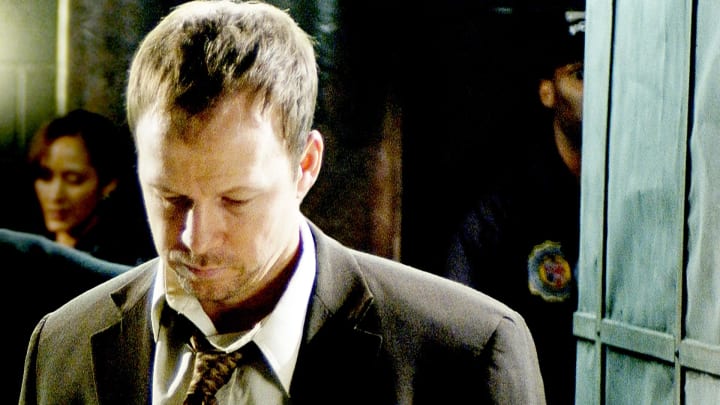
As clever as most of Saw II is the film does have certain flaws that keep it from surpassing the original. The characters locked away in Jigsaw's booby trapped murder house are an array of nobodies that could have wandered over from any other horror movie set. One by one they line up to be the next victim on the horror movie assembly line even as that assembly line is incredibly well made. Aside from Shawnee Smith's Amanda, no one in the remaining cast inside the murder house in Saw II makes much of an impression. They fail to be as interesting as the way in which they die.
Donnie Wahlberg has improved over the years as an actor but in 2005, he wasn't quite the audience surrogate that Danny Glover proved to be in the original. He doesn't quite hold the frame the way Glover did and his slightly lacking presence does hold Saw II back a little. Wahlberg had, in 2005, not quite climbed over that New Kids On The Block hump and audiences still kind of chuckled when they saw him at that time. This affected the perception of his character in Saw II, and in many ways time still hasn't improved or changed our perspective on Wahlberg. He's good enough in Saw II as loose cannon tough guy but I can imagine other actors, with less baggage, might have been more effective than Wahlberg.
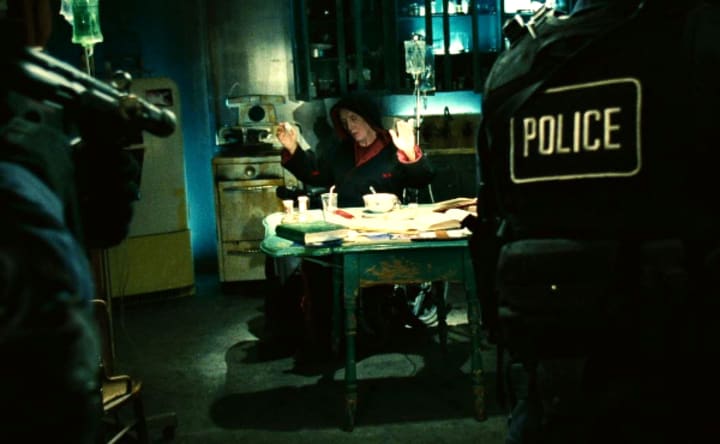
Jigsaw is an all time horror genre legend, having long ago joined the ranks of Michael Myers, Jason Voorhees and Freddy Krueger in the pantheon of great horror villains. However, it is exactly how different from those killers that he is that makes him so iconic. Jigsaw does not possess super strength, he is not immortal, and has no supernatural powers whatsoever. He is simply a sociopath with a toolbox and a dark and disturbing imagination.
The creators of the the character of Jigsaw defied modern horror conventions for villains which, in modern, 21st century, horror, leaned often toward killer redneck caricatures and supernatural conceits. They did this by creating a character with perspective, philosophy and a personality. As unlikely as they may be, the situations and creations of Jigsaw could be invented and executed in reality and that's legitimately terrifying.
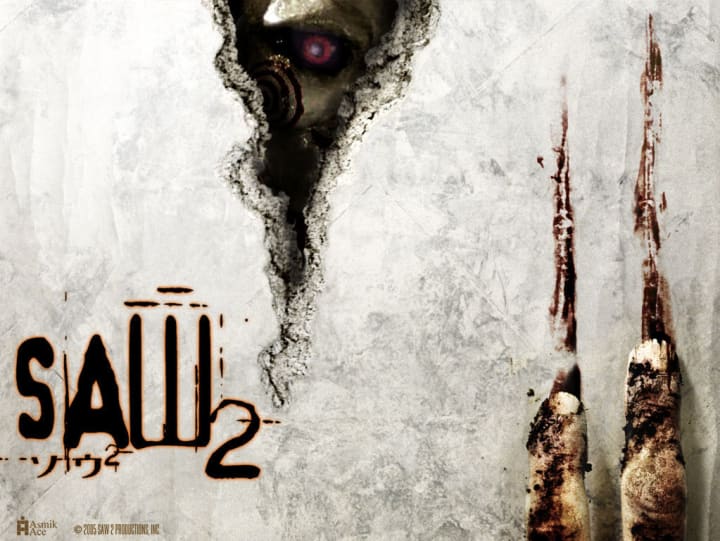
The devices are essentially ancient torture devices and all it would take to create them is the kind of commitment and sociopathy that thankfully no modern serial murderer has exhibited, that we're aware of. The variable is the actions of his victims and pursuers which, I imagine, are much more plausible in scripted form than they are in reality but that doesn't change my point about the horrifying plausibility of the character of Jigsaw.
The story of Jigsaw victims is where we delve into speculative philosophy, a view of humanity from two perspectives, optimism and cynicism. Jigsaw provides an optimists perspective in that every victim, especially those in Saw II, has a chance to survive if they don't go into business for themselves. If everyone works together in a Jigsaw plot, they can survive. They may be maimed or otherwise harmed, but they could live if they worked together. That's at the heart of every Jigsaw death puzzle. The movie plays out cynically with most of the characters going into business for themselves, playing out Survival of the Fittest as if they know they are the fittest to survive and getting most people killed for their selfishness.
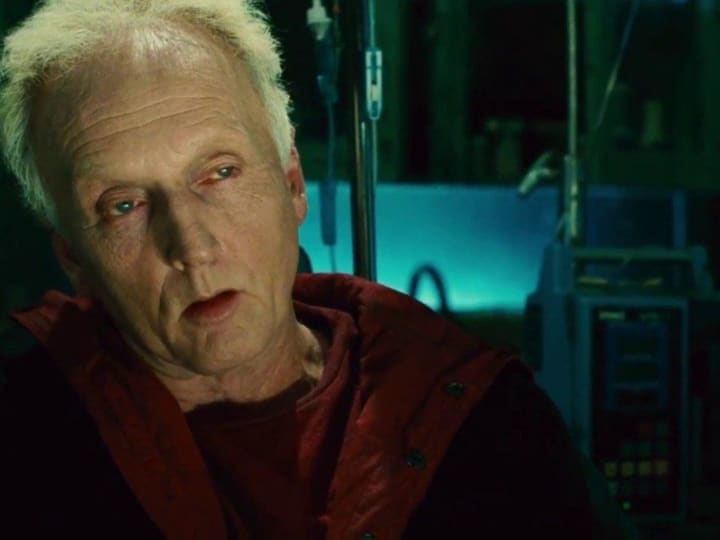
The victims in the Saw franchise fight Jigsaw and their fellow captives for survival. And that's the trick, everyone could survive if they'd put aside the instinct of preserving themselves and work together. Time and again in Saw II and the subsequent sequels, Jigsaw builds elaborate traps that, with some sacrifice, be it pain or the loss of a limb, are survivable through cooperation and taking even a slight interest in the survival of the group over the individual. Jigsaw's dark secret is revealed to be the belief that if people would only work together, we'd all be better off.
He's the strangest form of optimist in history. Top that with his also bizarrely optimistic notion that surviving his trap will make people value their life more, and become better people through the experience, and you have yet another brilliant twist on a horror villain. Jigsaw uses terror and torture as a method to teach and improve people. It rarely works, but he does have a philosophy and that gives the character purpose and personality beyond the gore and the death that are the hallmarks of the genre.

Saw II is lesser than it's predecessor but it's still a great horror movie and one that built the foundation on which this incredibly intelligent and unique franchise has been built upon. It's not all been great, Jigsaw 2017 was a major misstep, but with the release of Spiral: From the Book of Saw, I'm hopeful that the best horror franchise in history may still have life and personality left in it more than a decade later.
About the Creator
Sean Patrick
Hello, my name is Sean Patrick He/Him, and I am a film critic and podcast host for the I Hate Critics Movie Review Podcast I am a voting member of the Critics Choice Association, the group behind the annual Critics Choice Awards.






Comments
There are no comments for this story
Be the first to respond and start the conversation.